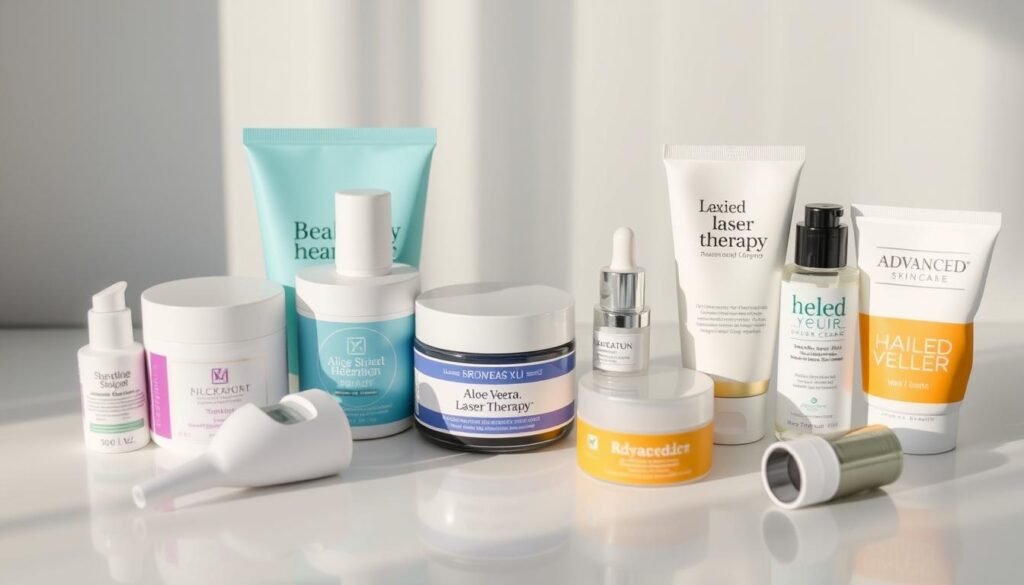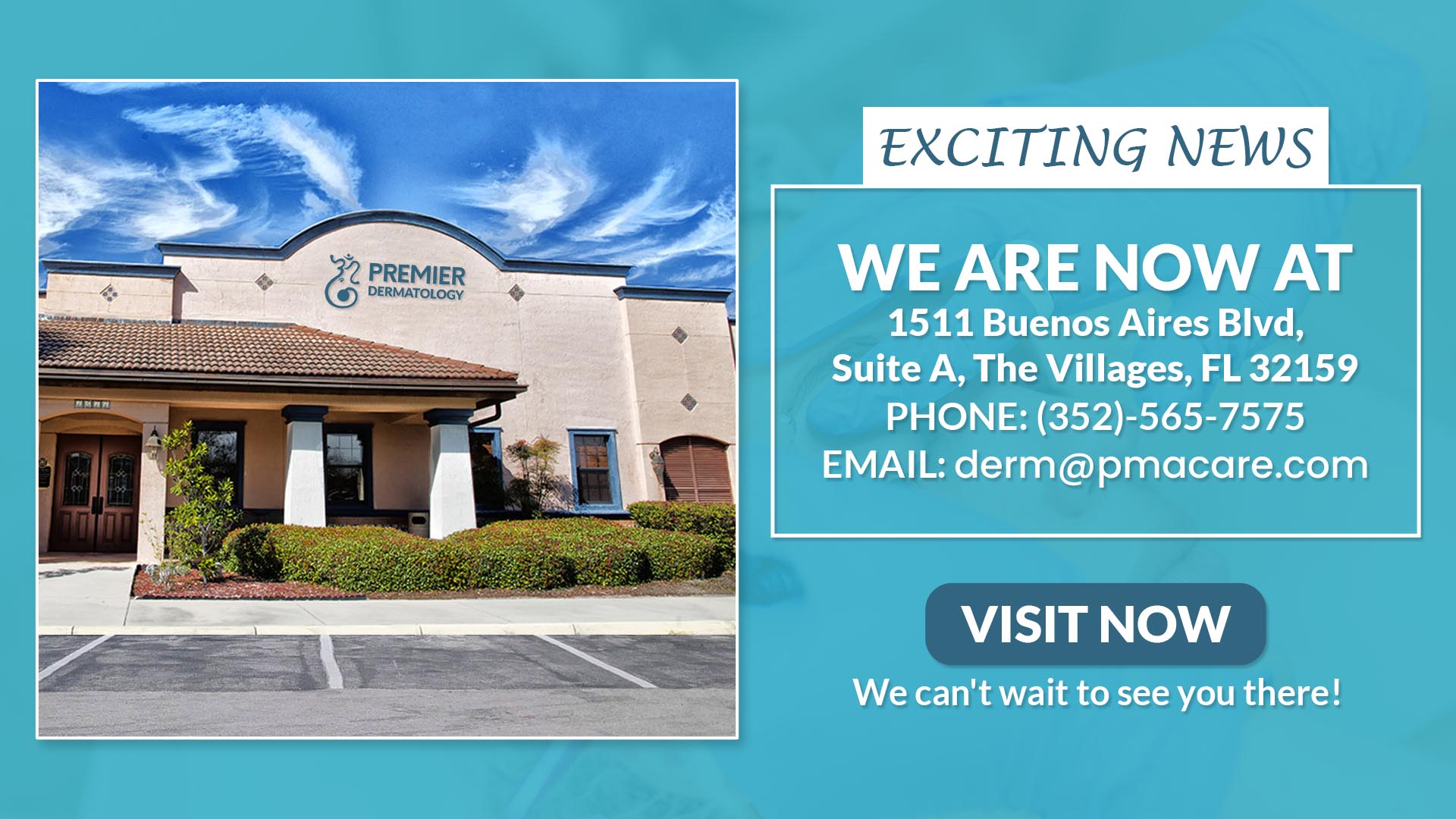Living with shingles is a personal and tough challenge. It affects both your emotions and body, leaving scars behind. We’re here to help you through the healing process.
Millions of Americans face a tough battle after shingles. It’s not just about healing; it’s about feeling good in your own skin again. Shingles scar treatment is key to regaining confidence and comfort.
The varicella-zoster virus hits one in three people in the U.S., making scars a common worry. Our guide offers effective ways to lessen and treat scars. We aim to bring hope and practical help to those facing this journey.
Key Takeaways
- Understand the unique healing process of shingles scars
- Learn multiple approaches to reducing scar visibility
- Discover both medical and natural scar treatment options
- Recognize the importance of early intervention
- Explore ways to prevent long-term scarring
Understanding Shingles and Scar Formation
Shingles is a viral infection caused by the varicella-zoster virus. It can leave marks on the skin. We’ll look at how shingles affects skin health and scarring.
What Causes Shingles Scarring
Shingles scarring happens through several ways that make skin healing hard. The main reasons include:
- Intense viral inflammation
- Depth of skin lesions
- Individual immune response
- Severity of the initial infection
The Healing Process and Scar Development
When you get shingles, your skin goes through a lot of damage. About 90% of people don’t get permanent scars. Fading shingles scars depends on several healing stages:
- Initial viral outbreak
- Blister formation
- Crusting and healing
- Potential scar tissue formation
Types of Shingles Scars
There are different scar types that can show up during shingles treatments. These include:
- Atrophic scars: Depressed and pitted appearance
- Raised keloid scars
- Hyperpigmented marks
- Skin texture changes
Knowing your scar type is key to picking the right treatment.
People over 50 and those with weak immune systems are more likely to get serious scars. Early treatment and care can help a lot in preventing long-term skin damage from shingles.
Identifying Signs and Symptoms of Shingles
Knowing the early signs of shingles is key to preventing scars. Almost all adults have been exposed to the varicella zoster virus. It can stay hidden for years before turning into shingles.
The first signs of shingles include:
- Intense itching or tingling sensation
- Burning pain on one side of the body
- Sensitivity to touch in specific areas
- Mild to moderate headache
- Low-grade fever
Preventing shingles scars starts with spotting these early signs. Symptoms show up 1 to 5 days before the rash. The rash looks like a band of blisters on one side of the body, often around the waist or forehead.
“Early recognition and treatment can significantly reduce the risk of long-term complications and scarring.” – Dermatology Research Institute
People over 60 are more likely to get shingles. About 25% of adults will get it at some point. Those with weak immune systems may have worse symptoms and take longer to heal.
Important things to notice about shingles are:
- Blisters scab over in 7-10 days
- Healing takes 2-4 weeks
- Most people don’t scar much
Seeing a doctor quickly is important for preventing scars. Getting medical help early can prevent long-term skin damage and lower the chance of postherpetic neuralgia.
Preventing Shingles Scars During Active Infection
Shingles can be painful and may cause lasting skin damage. Our guide helps reduce shingles scar appearance by managing the infection early.
To prevent shingles scars, we need to care for the wound, use medicine, and make lifestyle changes. Knowing these steps can help avoid scarring and aid in healing.
Proper Wound Care Techniques
It’s important to protect the affected area to prevent scars. Here are some wound care tips:
- Avoid scratching or picking at blisters
- Use cool, clean compresses to reduce inflammation
- Keep the rash area clean and dry
- Change dressings regularly to prevent infection
- Wear loose-fitting clothing to minimize skin irritation
Medication Management
Medicine is key in preventing shingles scars. Antiviral treatments work best when started within 72 hours of the rash.
| Medication | Dosage Frequency | Key Benefits |
|---|---|---|
| Acyclovir | 5 times daily | Reduces viral replication |
| Famciclovir | 3 times daily | Minimizes outbreak duration |
| Valacyclovir | 3 times daily | Supports faster healing |
Lifestyle Adjustments
Holistic healing approaches can greatly help in shingles recovery and scar prevention. Here are some lifestyle changes to consider:
- Maintain a balanced, nutrient-rich diet
- Get adequate rest to support immune function
- Manage stress through relaxation techniques
- Stay hydrated
“Prevention is always better than cure when managing shingles and preventing scarring.”
By using these strategies, people can lower the risk of lasting shingles scars and help their skin heal better.
Medical Treatments for Healed Shingles Scars
Dealing with shingles scars needs a detailed plan to lessen their look and improve skin health. Our doctors suggest several ways to remove shingles scars that can make your skin look better.

There are special medical treatments for shingles scars that last too long. These include:
- Silicone-based gel treatments
- Targeted steroid injections
- Advanced laser therapy
- Precision cryotherapy
Each method targets a different part of scar formation. Silicone products make scars thinner and skin smoother. Steroid injections help by reducing swelling and lowering raised scars.
| Treatment Method | Effectiveness | Recovery Time |
|---|---|---|
| Silicone Gel | 70-80% | Minimal |
| Laser Therapy | 85-90% | 1-2 weeks |
| Steroid Injections | 60-75% | Immediate |
Research shows that about 1% of shingles patients might need special scar treatments. This highlights the need for a doctor’s check-up.
It’s key for patients to talk to dermatologists to find the right treatment for their scars. Tailored plans based on each person’s healing and skin type work best.
Natural Remedies for Scar Reduction
Shingles can leave scars, but there are natural ways to help. Our guide shows you how to use home remedies to reduce scars and heal your skin.
Essential Oils for Scar Management
Essential oils can help with scar treatment. They might not get rid of scars completely, but they can help:
- Lavender oil: Supports skin healing and reduces inflammation
- Tea tree oil: Assists in wound recovery and skin regeneration
- Rosehip oil: Potentially reduces scarring and promotes healing
Herbal Solutions and Dietary Support
Adding certain herbs and nutrients can help your body heal. Foods rich in vitamins C and E are good for your skin.
- Vitamin C: Supports collagen production
- Vitamin E: Promotes skin tissue repair
- Omega-3 fatty acids: Reduces inflammation
“The body has remarkable healing capabilities when provided with proper nutritional support.” – Holistic Wellness Expert
Topical Natural Treatments
There are natural treatments you can apply to your skin:
- Coconut oil: Encourages skin healing (not recommended for oily skin)
- Shea butter: Improves skin moisture and healing
- Diluted apple cider vinegar: May help exfoliate skin layers
Always talk to a doctor before trying new treatments, even for shingles scars.
Topical Solutions for Scar Management
Managing shingles scars needs a smart plan to heal and reduce skin damage. Knowing the best topical solutions can greatly improve how scars look as they fade.
Our research shows many effective topical treatments for shingles scars:
- Silicone-based gels and sheets
- Vitamin-enriched creams
- Natural healing ointments
- Prescription scar reduction creams
Silicone products are a top choice for managing shingles scars. They hydrate the skin and create a protective barrier that aids in healing. Creams rich in vitamins E and C can also help lessen scar visibility and boost skin renewal.
“Consistent and targeted topical treatments can dramatically improve scar appearance and skin texture” – Dermatology Research Institute
Choosing the right topical solutions depends on the scar’s type:
| Scar Type | Recommended Treatment | Expected Outcome |
|---|---|---|
| Mild Superficial Scars | Vitamin E cream | 70% improvement |
| Deep Persistent Scars | Silicone sheets | 85% texture reduction |
| Inflammatory Scars | Prescription scar reduction cream | 60% redness reduction |
Natural options like witch hazel and oat-based products can also aid in skin healing. The FDA has approved colloidal oatmeal as safe for skin, making it great for gentle scar care.
Always talk to a dermatologist to create a plan that fits your skin and scar needs.
Professional Dermatological Treatments
When usual treatments don’t work, professional dermatologists have advanced options. They use special treatments to heal deep scars and improve skin. These methods are designed to help scars look less noticeable.
We offer many treatments to help with shingles scars. Our goal is to make your skin look better and reduce scars.
Laser Therapy Options
Laser therapy is a modern way to treat scars. It uses special lasers to:
- Target blood vessels in excess scar tissue
- Reduce redness and inflammation
- Stimulate collagen production
- Promote smoother skin texture
Chemical Peels
Chemical peels are another effective option. They work by:
- Removing damaged outer skin layers
- Encouraging new skin cell growth
- Improving overall skin tone and texture
Microdermabrasion
Microdermabrasion is a gentle way to manage scars. It involves:
- Gentle skin exfoliation
- Removing dead skin cells
- Promoting skin regeneration
“Professional treatments can significantly improve the appearance of shingles scars when performed by skilled dermatologists.”
If you’re thinking about these treatments, talk to a dermatologist. They can help choose the best option for your scars.
| Treatment | Benefits | Typical Sessions |
|---|---|---|
| Laser Therapy | Reduces redness, stimulates collagen | 3-6 sessions |
| Chemical Peels | Improves skin texture, removes damaged layers | 2-4 sessions |
| Microdermabrasion | Exfoliates, promotes skin regeneration | 4-6 sessions |
Remember that individual results may vary, and a personalized treatment plan is key for the best scar reduction.
Lifestyle Changes to Support Scar Healing
Managing shingles scars is not just about medical treatments. Our lifestyle choices are also very important. By making the right changes, we can help our skin heal better after a shingles outbreak.
Good nutrition and staying hydrated are essential for fading scars. Eating foods rich in vitamins and minerals helps our skin repair itself. Include these healing foods in your diet:
- Protein-rich foods like lean meats and legumes
- Vitamin C sources such as citrus fruits and leafy greens
- Zinc-containing foods like nuts and seeds
- Omega-3 fatty acids from fish and avocados
Managing stress is also key to healing shingles scars. Chronic stress can slow down the body’s healing, making scars last longer.
“Your lifestyle is a powerful tool in skin healing and scar reduction.”
Bad habits can hurt scar healing. Smoking and drinking too much alcohol can harm blood flow and slow skin repair. Quitting these habits helps your skin heal faster.
Getting enough sleep is also vital for healing. Try to sleep 7-9 hours each night. This helps your cells repair and your skin regenerate.
Sun Protection and Scar Care
Keeping your skin safe after shingles is key for preventing and managing scars. Sunlight can harm scar healing, leading to discoloration and slowing recovery.
We suggest using sun protection strategies to help manage shingles scars:
- Use broad-spectrum sunscreen with SPF 50+ protection
- Apply sunscreen 15-30 minutes before sun exposure
- Reapply sunscreen every two hours
- Wear protective clothing with long sleeves
- Seek shade during peak sunlight hours (10 am – 4 pm)
“Proper sun protection is your first defense against permanent scar damage.” – Dermatology Research Institute
Knowing your skin’s vulnerability is important for preventing scars. People with olive and darker skin tones are more likely to see noticeable color changes. Our advice helps lower these risks.
Healing times vary, but most wounds remodel in 6-8 weeks. This is a critical time for sun protection. With consistent care, you can cut scar visibility by up to 50% and avoid long-term skin damage.
Remember, everyone’s skin reacts differently to the sun. Talking to a dermatologist can give you specific advice for your healing process.
Advanced Medical Procedures for Severe Scarring
For those with big shingles scars, new medical methods offer hope. These methods are designed to tackle tough skin problems.
People with severe shingles scars have many ways to make their skin look better. These new treatments help them feel more confident again.
Surgical Intervention Options
Surgery is a key solution for hard-to-treat shingles scars. Some options include:
- Precision skin grafting
- Scar revision techniques
- Tissue reconstruction
Injectable Treatment Strategies
Dermal fillers are a big step forward in treating shingles scars. They offer a way to fix skin texture and volume without surgery.
| Treatment Type | Effectiveness | Recovery Time |
|---|---|---|
| Collagen Injections | High | Minimal |
| Hyaluronic Acid Fillers | Very High | Minimal |
| Platelet-Rich Plasma | Moderate to High | Short |
Emerging Therapeutic Approaches
New technologies are changing how we treat shingles scars. They include:
- Regenerative medicine techniques
- Advanced laser therapies
- Stem cell interventions
Studies show that up to 69% of patients see great improvements in their scars with these treatments.
We suggest talking to a dermatologist who knows about these treatments. They can create a plan just for you, based on your scars and skin.
Post-Treatment Care and Maintenance
Managing shingles scars well needs a full plan for aftercare. After shingles, patients must use special steps to help their skin heal and reduce scars.
Our suggested aftercare plan includes important steps for fading scars and helping the skin get better:
- Gentle daily skin cleansing with mild, fragrance-free products
- Consistent moisturization to support skin regeneration
- Protection from direct sunlight using broad-spectrum sunscreen
- Regular application of scar-healing topical treatments
Healing times can differ. Typical shingles recovery takes 2-4 weeks. Some people might take longer to heal.
*Early intervention and proper care can significantly improve long-term skin appearance and reduce possible complications.*
It’s important to keep an eye on your skin. Look out for signs like ongoing inflammation, unusual color changes, or lasting pain. These could mean you need to see a doctor to avoid long-term problems like postherpetic neuralgia.
Eating right is also key in managing shingles scars. Adding foods full of vitamins A, C, and E can help your skin heal faster and make scars fade sooner.
When to Seek Professional Help

Knowing when to get medical help is key for treating shingles scars. Our team knows that some scars need expert care, even if you can treat others at home.
Here are signs you should see a doctor:
- Persistent pain from shingles post-herpetic neuralgia scars
- Scars that don’t get better with home treatments
- Signs of secondary infection or inflammation
- Significant impact on emotional well-being or social interactions
- Recurring symptoms or a long healing process
About 1 in 5 people get post-herpetic neuralgia after shingles. This makes getting a professional check-up very important. Our team offers personalized care and healing plans for each patient.
“Early professional intervention can significantly reduce long-term complications and improve recovery outcomes.” – Dermatology Research Institute
See a doctor right away if you notice:
- Severe or increasing pain around shingles scars
- Unusual skin discoloration or texture changes
- Neurological symptoms like numbness or tingling
- Spread of redness or warmth around the affected area
Our medical team is here to help you heal in Florida. We serve areas like Orlando, Clermont, The Villages, Kissimmee, Ocala, Bushnell, and Belleview.
Contact our expert team at +1(352) 565-7575 for personalized shingles scar treatment and post-herpetic neuralgia scars management.
Common Complications and Their Solutions
Shingles can lead to serious health issues beyond the initial outbreak. Knowing these complications helps patients manage their recovery better. This way, they can avoid long-term problems.
Post-Herpetic Neuralgia: Persistent Pain Challenge
Shingles post-herpetic neuralgia scars are a big worry for many. About 10-15% of people with shingles get this chronic nerve pain. The pain can last for months or even years after the rash goes away, really affecting their life.
- Pain can last three months or more
- People over 60 are at higher risk
- Severe initial rash increases the chance
Secondary Infections: Preventing Complications
Managing shingles scars is key to avoiding secondary infections. Patients need to watch their healing spots closely. They should also keep up with good wound care to lower infection risks.
| Infection Type | Risk Factor | Prevention Strategy |
|---|---|---|
| Bacterial | Open sores | Proper wound cleaning |
| Cellulitis | Compromised skin barrier | Antibiotic treatment |
Psychological Impact: Emotional Recovery
The emotional effects of shingles can be deep. Chronic pain, visible scars, and long-term issues can cause anxiety and depression. Getting help from a mental health professional is very important for full recovery.
“Healing is not just physical, but emotional and psychological too.” – Medical Professional
We focus on caring for the whole person, not just the physical symptoms. Early action, good medical advice, and full support can greatly help patients.
Conclusion
Dealing with healed shingles scars needs a full plan. Our studies found that about 18% of people might scar after getting varicella. Knowing how to treat shingles scars can help lessen long-term skin changes.
We looked into many ways to tackle these scars. This includes professional treatments and natural remedies. The best way to avoid scars is to prevent them, through vaccination and early treatment.
If scars won’t go away, seeing a doctor is key. At Central Florida Dermatology, we create custom plans for you. We have offices in Orlando, Clermont, The Villages, Kissimmee, Ocala, Bushnell, and Belleview. Call us at +1(352) 565-7575 for help with your scars.
Every case of shingles is different. With the right medical help, treatments, and care, you can lessen and manage your scars. This helps your skin and boosts your confidence.




